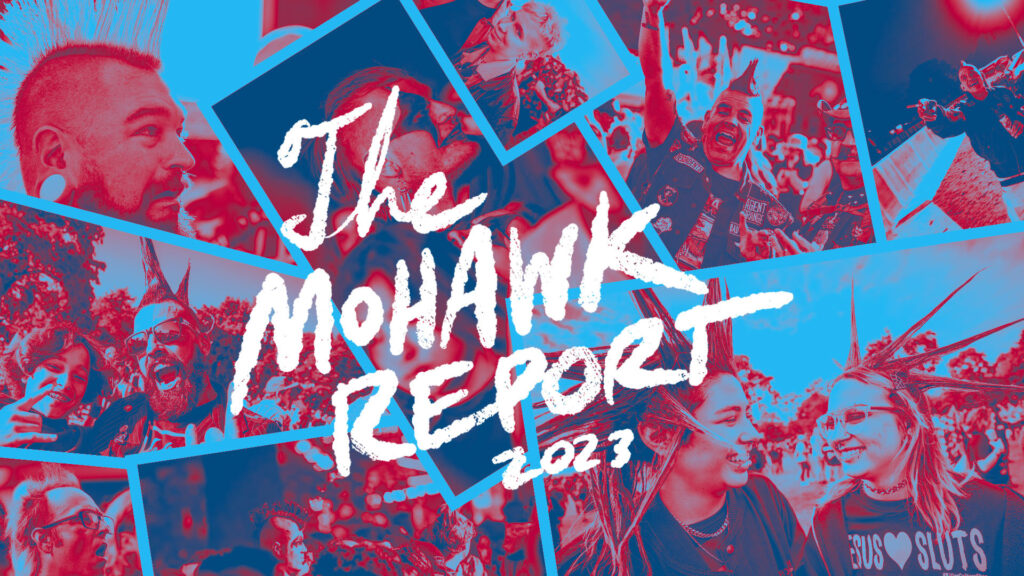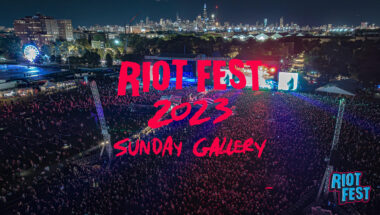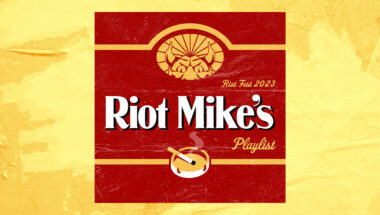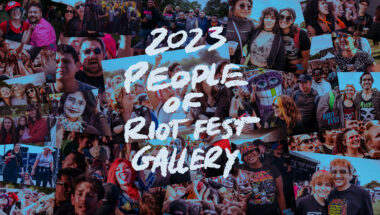Riot Fest, dear, wonderful Riot Fest, I have some very interesting news. The mohawk numbers are down, by a not insignificant number too. Raw data time.
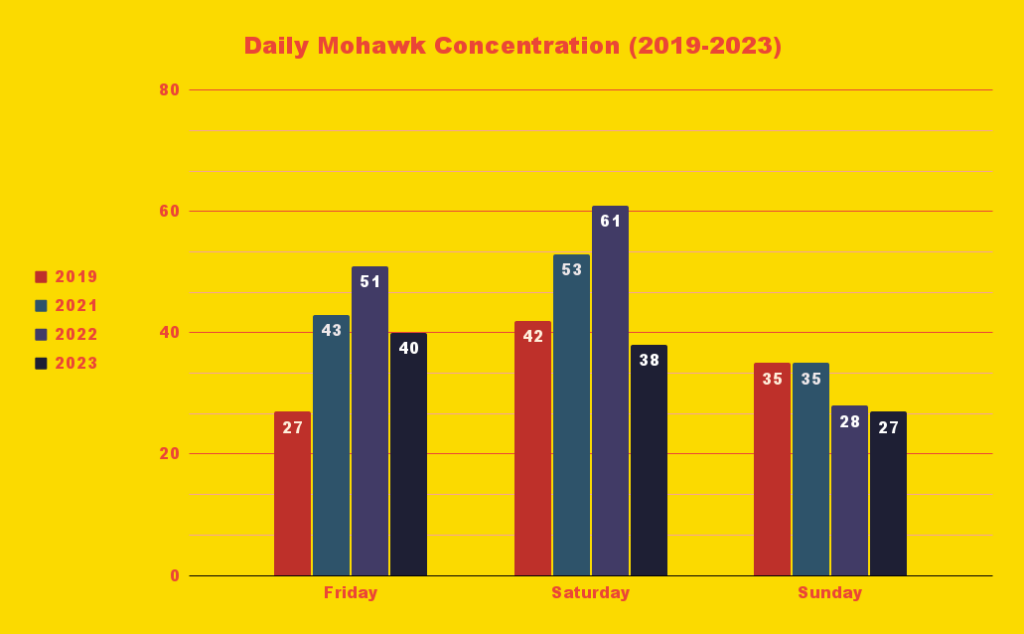
Friday had a total of forty (40) mohawks. Saturday gave us thirty-eight (38) mohawks. And Sunday, lagging behind as usual, had twenty-seven (27). All together, a total of one hundred five (105) mohawks. A decrease! For the first time! However, I don’t think this is a bad thing at all. Sociological data of this variety is never good nor bad, just informative. And goddammit I am going to inform.
Unlike previous years where I could consider attendance, I do not have any firm decisions on which day had the higher population. Each seemed relatively even, and no day had a bigger name band draw. That said, I might once again consider the band genres of the headliners as a possible determining factor. Let’s get into the day-to-day comparisons!
Friday, for the first time in extant data, had the most mohawks! Only by a slim margin, but still a notable change either way. The Foo Fighters are, to me, the type of band that would draw a much larger mohawk’d crowd than the other days. Nothing held against The Postal Service or The Cure – I had a fantastic time every day! But from the objective perspective of a mohawks researcher, Foo Fighters, as a band with a significantly heavier rock tone, are more likely to draw mohawks from the scalps of its fans than the somewhat pop-like tones of The Postal Service.


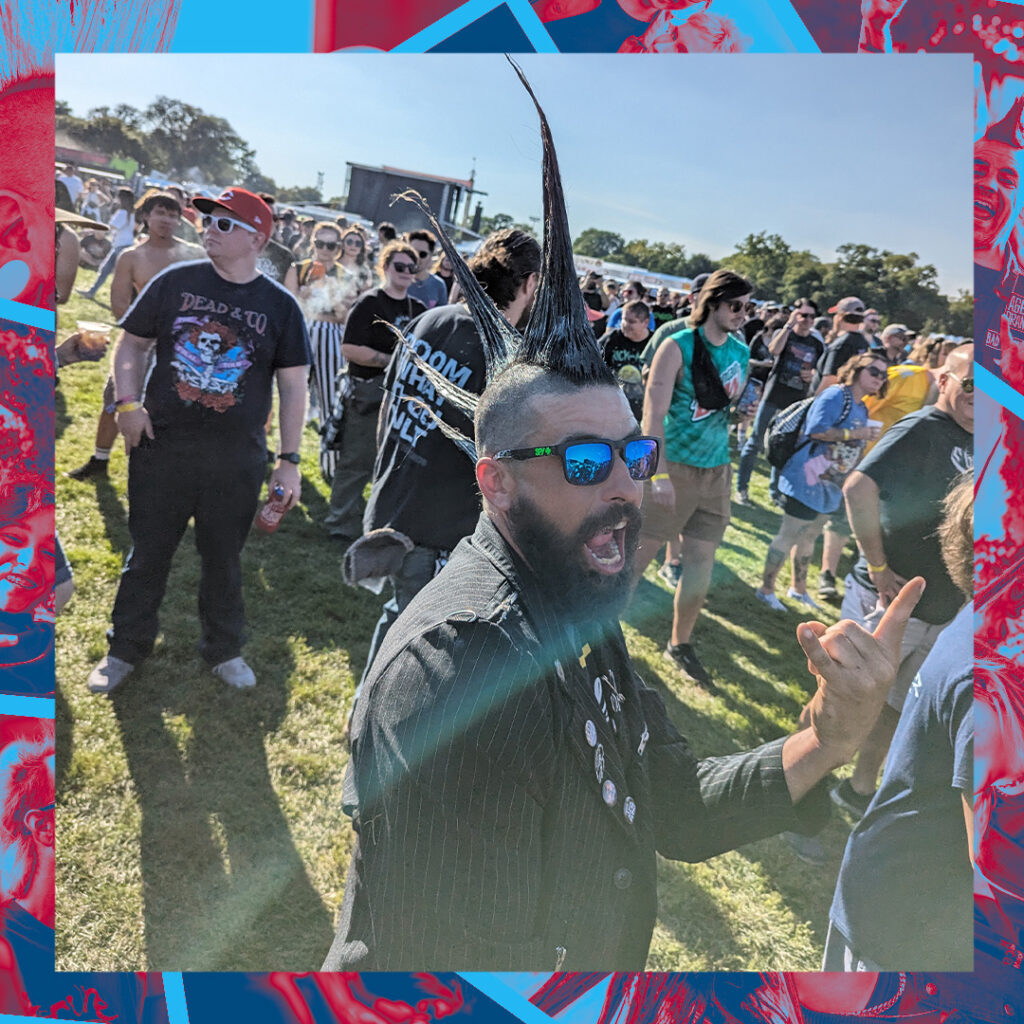

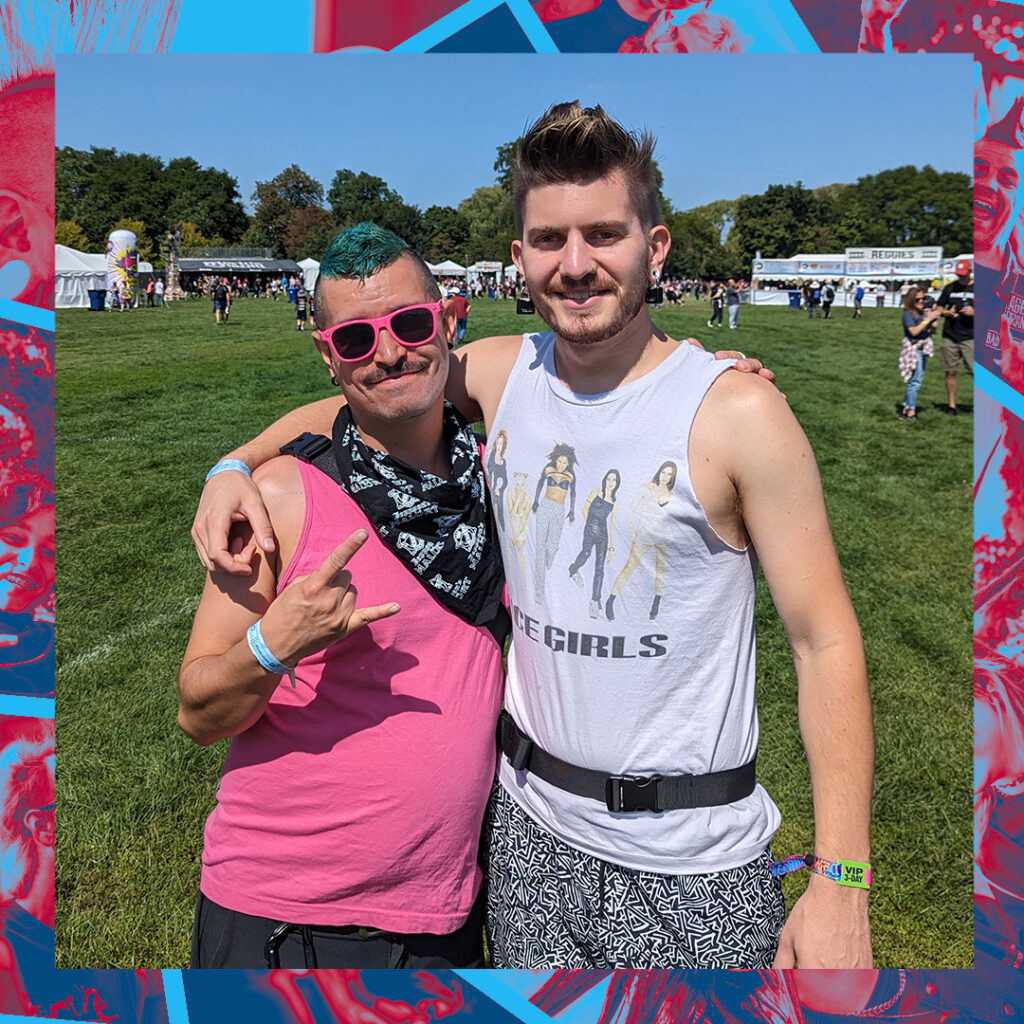
Of course, Saturday also had another fashion factor that could not exist or come close to manifesting in any other lineup: Juggalos. Yes, the Juggalo is a mysterious and heavily misunderstood crowd, and it is one with a very distinct fashion style. However, among that style and all the face paint and baggy clothes, is not the mohawk. I did see a couple Juggalos with mohawks (Juggalohawks), though I did not capture any pictures of this elusive style clash. However, one might theorize that the inclusion of the Juggalo fashions might have had an inverse effect on the number of mohawks seen on Saturday.
Sunday was ever the aberration and had its own reasons for data changes. The rain delay likely had an attendance impact, though one would not have guessed that from the crowd at The Cure (Side note: As a Goth band, The Cure possibly had its own time-specific fashion draw, and the Gothic fashion sensibilities do not often cross into mohawks territory but rather its own brand of outrageous volume. But I’m not a Goth Researcher, I’m a Mohawk Researcher, so I won’t speak too long on this topic). There were certainly bands on Sunday that likely had a hard draw of punks, such as The Bronx, Flogging Molly, AFI, etc. But even so, it seemingly was not enough to bring it within the close range that Friday and Saturday share. I am slowly becoming more confident in my belief that headliners have an important relationship with mohawks numbers.
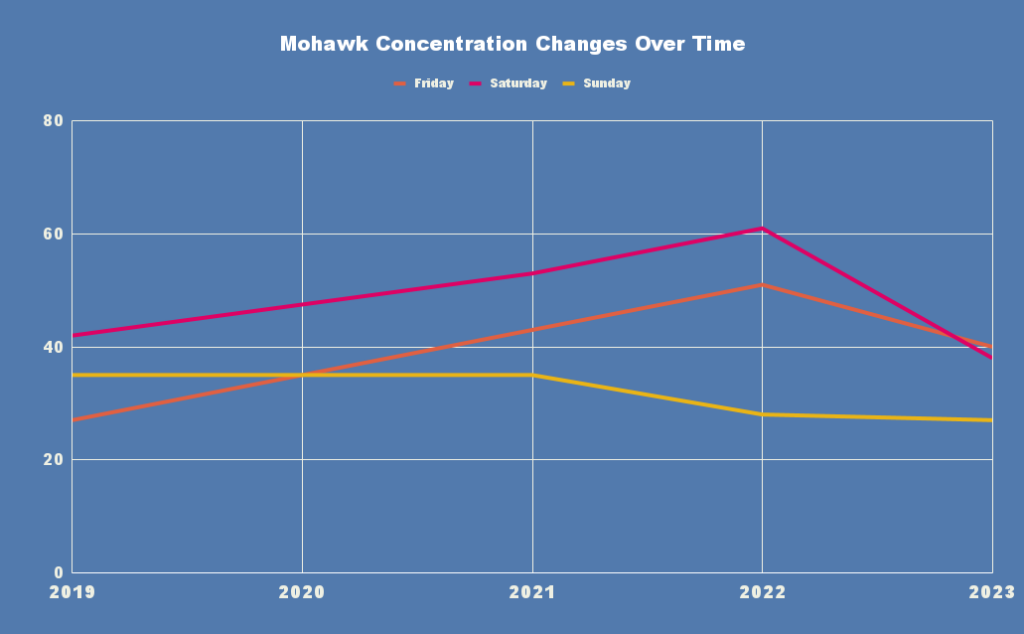
Analyzing the year-to-year change was certainly interesting this time around. For the sake of something resembling brevity, my analysis will focus mainly on totals. This year showed a total decrease of thirty five (35) mohawks. That’s not insignificant! It’s a somewhat serious change. But what is really interesting is that this year was close to the only pre-COVID data set I currently have, 2019. That year saw a total of one hundred four (104) mohawks, only one below the reports from this year. Now, you all might recall in my initial analysis, I posited that it was possible the cabin fever of the pandemic led to a sharp increase in mohawks.
As we settle down and try to forcibly shove Covid in the rear view, is it possible that we grow closer to normalcy even in our hairstyles? I shiver to even consider the possibility, but I do not want to dwell on such matters. There are more important things to consider, like annual day-to-day comparison statistics!
As compared to the previous years, Friday performing the best is certainly a change, but not necessarily a surprising one. As the test line chart I have generated seems to imply, Friday’s rate of change is higher than that of the other days. Part of this is the sharp increase from 2019 to 2021, but implied relationships are still relationships of a kind. Saturday actually has a slower rate of change and Sunday has a fully negative rate of change. That said, band-related speculation still has a grip on me and I don’t want to place too much weight on this relationship just yet. There will hopefully be many years to analyze data and find proper rate of change in the data. A good scientist does not jump to conclusions, instead waiting for the conclusion to jump to itself.
Riot Fest, dearly loved Riot Fest, this year might prove to be an outlier in comparison to previous years. Maybe the lower numbers are unusual in total, maybe they are a harbinger of future mohawk depreciation. Either way, this year has valuable data contained within. I fully intend on embracing the statistical relationship that it will prove to have from years on, whatever that relationship may prove to be.
Note from Fish:
And last, I am happy to announce that there will be an Epilogue to this year’s report! I have some photos of mohawks, and some information about them. In addition, I have some possible more Humanities-focused analysis to go along with them.
Stay tuned for a new approach to mohawk analysis!
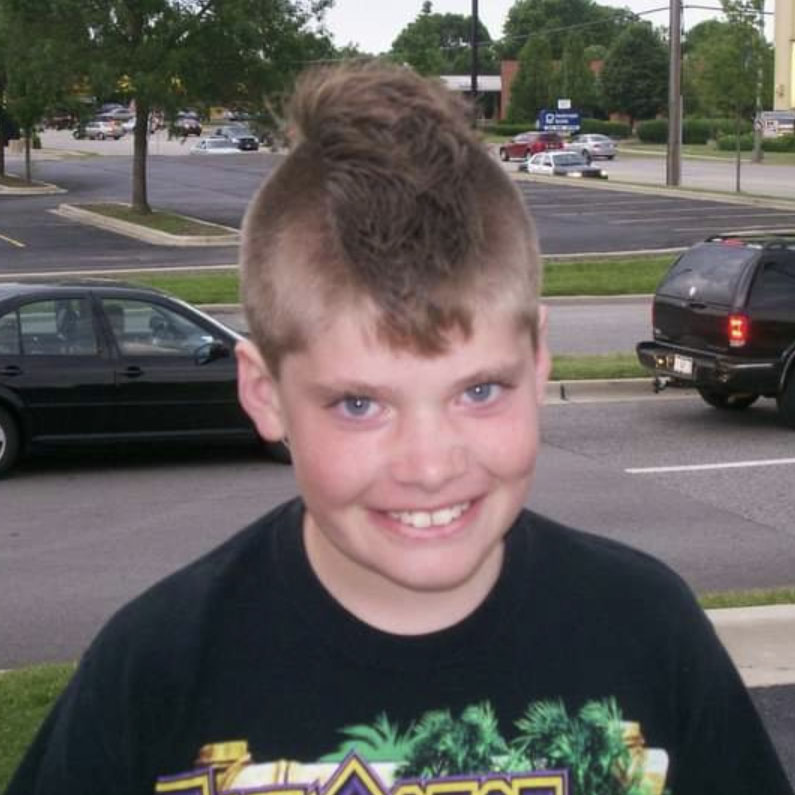
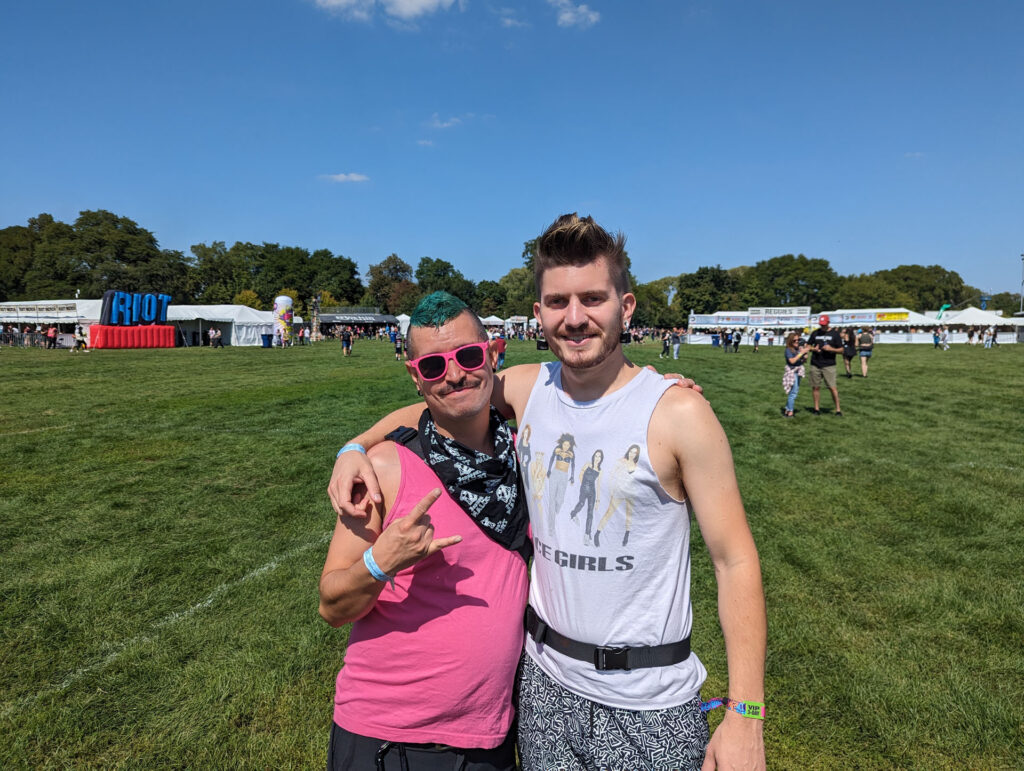
This was the first picture of mohawks I took this year. I was nervous to ask for pics but they were super chill.
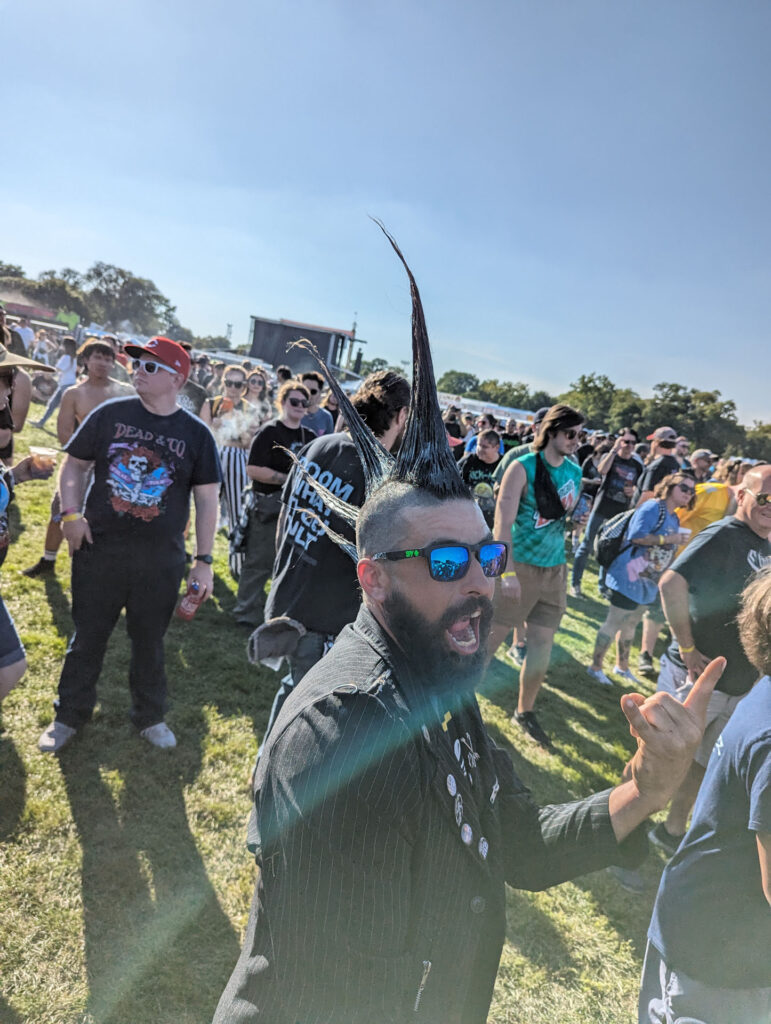
I saw this guy from a distance and almost had to chase him down. I ended up asking his friend to get his attention, and she shouted “Hey fucker!” That seemed to work and he gave me the most enthusiastic picture of the weekend.

This guy had a super impressive mohawk with a checkerboard pattern on the side. When I asked for a picture, he insisted that I include the person responsible. I was happy to oblige.

I got this picture on Saturday, thought it was fun seeing couples in Mohawks.
